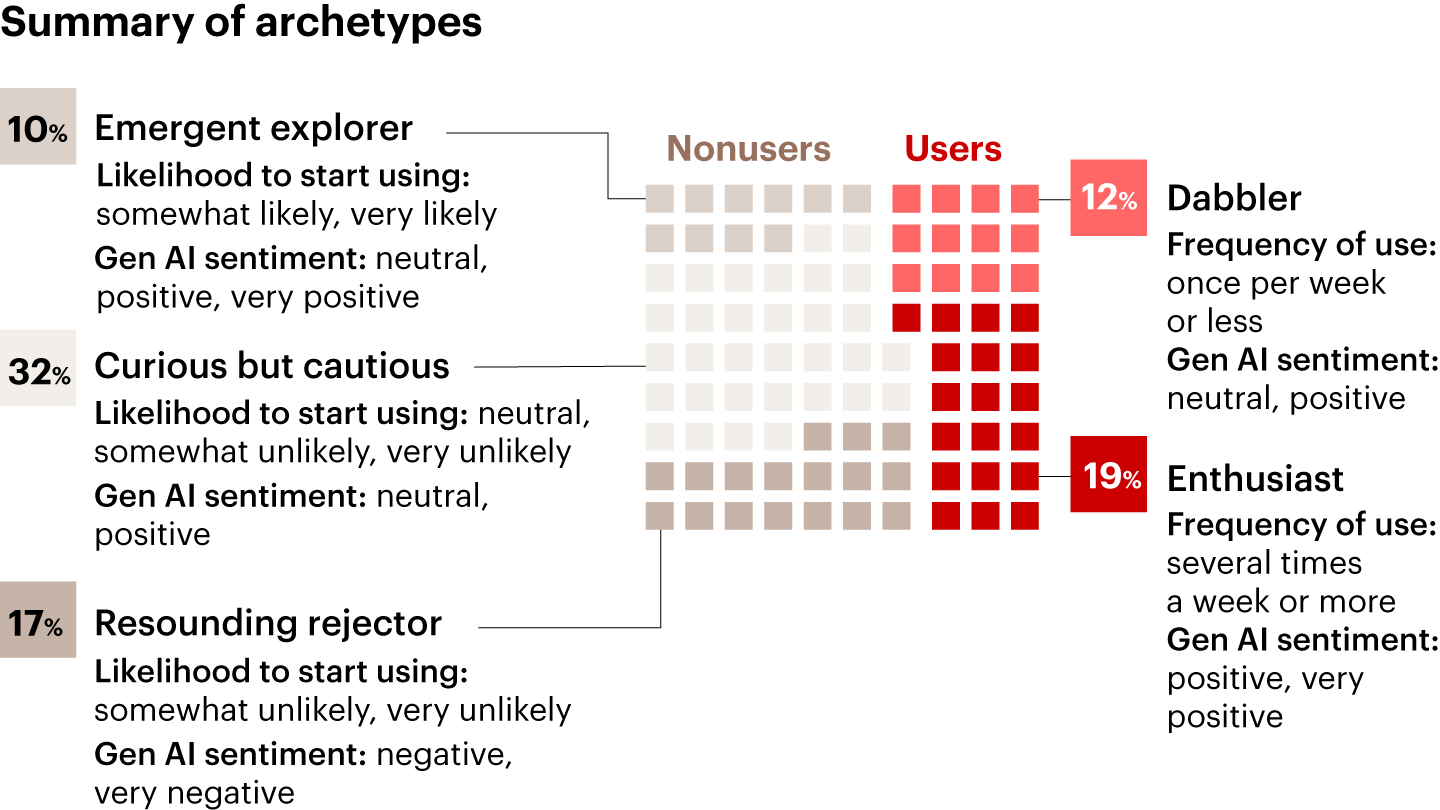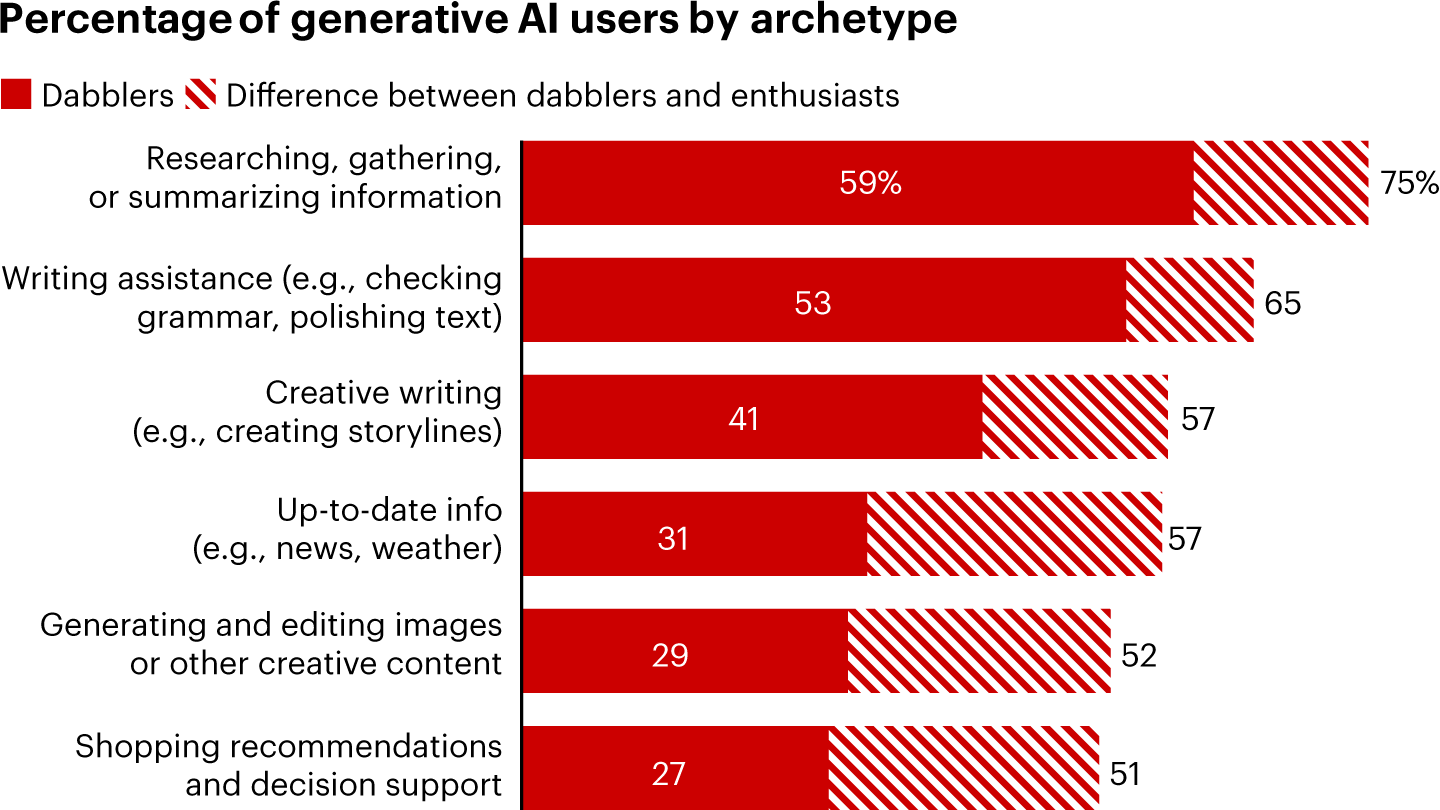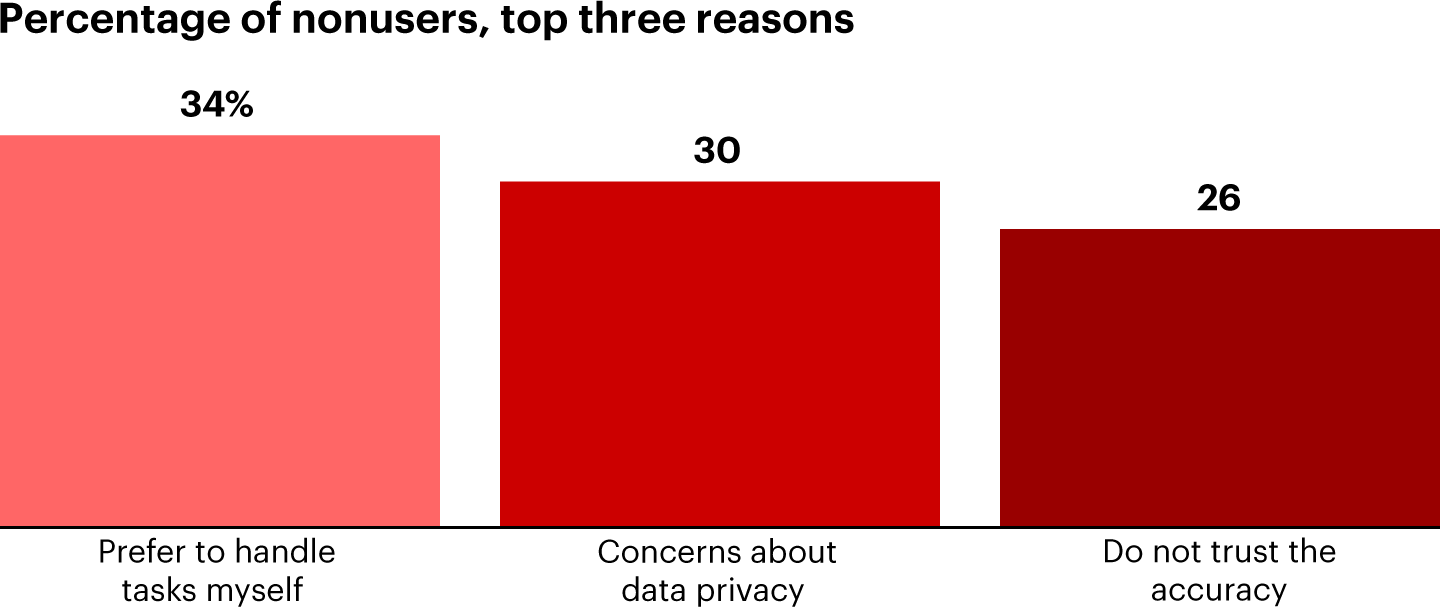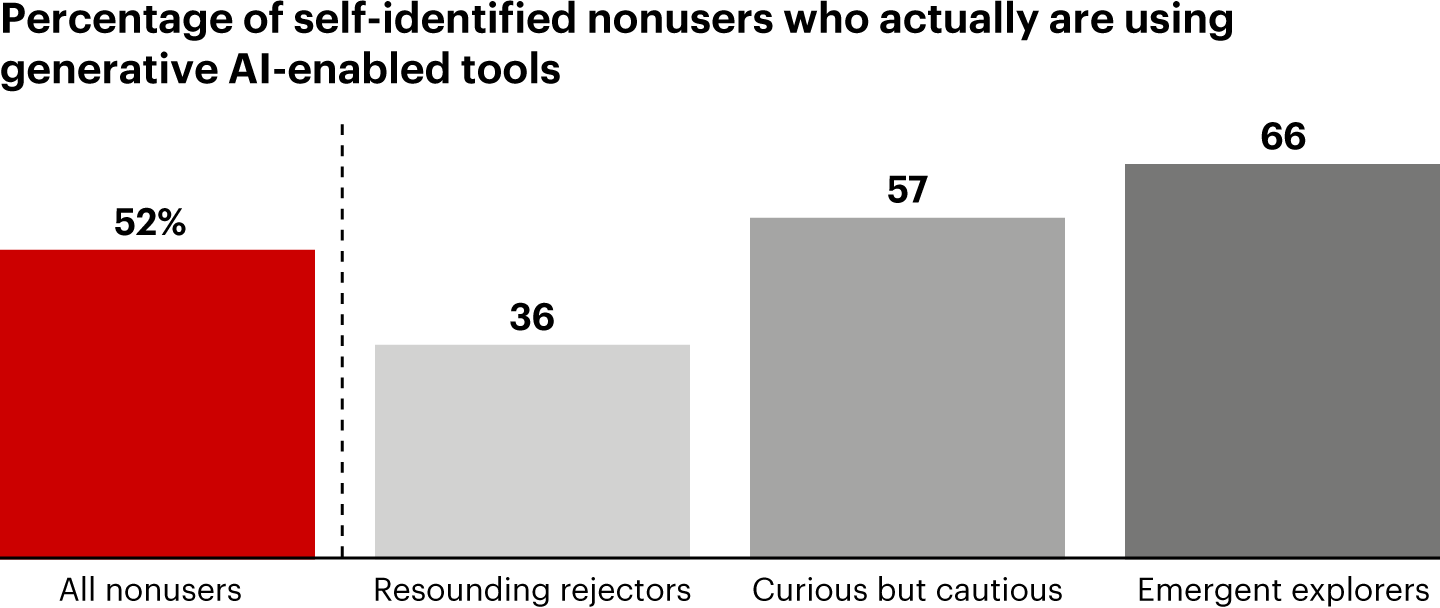Brief

At a Glance
- Although 95% of companies use generative AI, only 35% of US consumers do.
- Enthusiastic adopters use AI for productivity and problem solving; less committed dabblers see it as a way to learn new things and have fun.
- Lack of trust and familiarity hold nonusers back—though many unknowingly engage with AI through chatbots and digital assistants.
- Bain research identifies five distinct consumer segments, from AI enthusiasts to outright rejectors.
Businesses have embraced generative AI, with 95% of US and European companies actively using it, according to Bain & Company’s latest research.
Consumers, however, remain cautious. While interest is growing, only 35% say they use generative AI, according to a December 2024 Bain survey—though many likely interact with it unknowingly. Concerns around privacy, accuracy, and data security are major barriers, as is a preference for doing tasks themselves, especially for nonusers.
Our recent survey identifies five distinct AI consumer segments, from enthusiasts to resounding rejectors (see Figure 1). Understanding these segments and their attitudes toward AI can help companies make better decisions about how to create and market products and services that deliver the benefits of AI to their customers.


Note: 10% of respondents did not fit into an archetype
Sources: Bain–Dynata Generative AI Consumer Survey, December 2024 (n=1,117); Bain in-depth interviews (n=20)Adopters are broadening usage
Among consumers who say they use generative AI, usage is increasing (see Figure 2).


Enthusiasts and dabblers say they use generative AI to improve their productivity, learn new things, and experiment with new technology. Compared with dabblers, enthusiasts use generative AI more often to navigate challenges and solve problems, while dabblers are more likely to use generative AI to experiment and have fun. In terms of specific uses, research and writing assistance top the list for both (see Figure 3).


As with past tech waves, early adopters are experimenting and finding new uses for AI, paving the way for mainstream adoption. Our survey also found a significant overlap among enthusiasts and people with wearable AI devices, including glasses, pendants, and rings. We may be at the dawn of a new era of technology engagement, as the 5% of US adults with an AI wearable in late 2024 could quadruple to 20% by the end of 2025. (For more, see the Bain Brief “What We Can Learn from Early Adopters of Wearable AI.”)
Nonusers remain wary
Among consumers who don’t use generative AI, the main barriers are trust and a preference for doing things themselves (see Figure 4). About half of respondents say they’ve never used it, while 18% tried it but stopped. Among lapsed users, about half explored it out of curiosity and then lost interest; others quit for more specific reasons, including concerns about data privacy and a preference for handling tasks without AI assistance.


However, many consumers are using AI without realizing it, as they chat with digital assistants, engage with customer service chatbots, peruse recommendations, and accept grammar and spelling suggestions in digital communication (see Figure 5).


As more people experience embedded AI handling everyday tasks, comfort with direct AI use may grow. Meanwhile, as companies integrate natural language interactions into customer journeys, attitudes toward this technology could shift significantly.
What Type of Generative AI Consumer Are You?
AI is becoming a bigger part of everyday life—but how do you engage with it? Are you skeptical, curious, or an avid user? Take this quick survey to discover your generative AI persona and see where you fit in the world of AI.

About the Research
Data powered by Dynata, a leading global first-party data and insights platform.